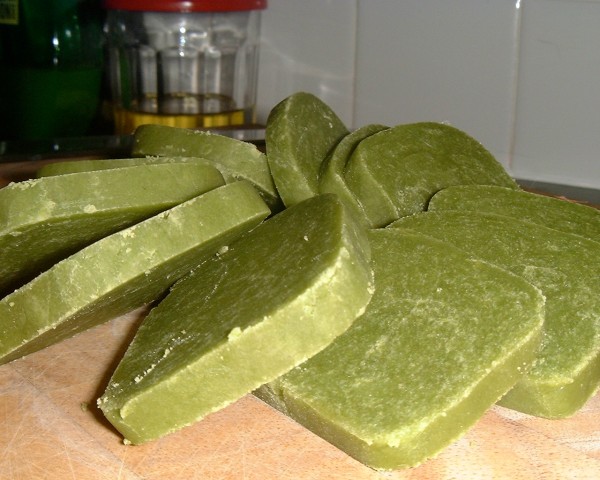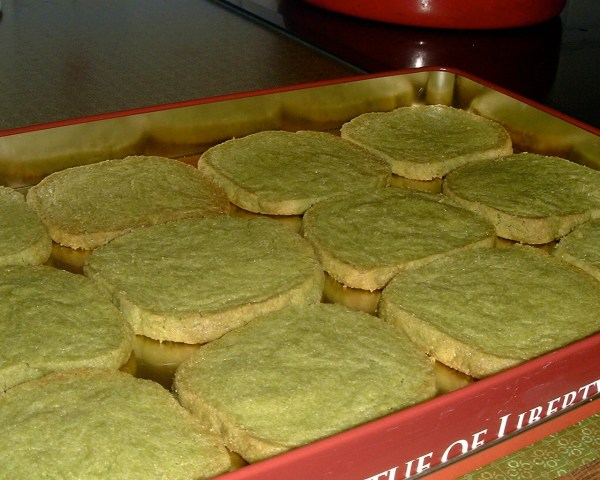Roast Goose and Cooking Times
We had roast goose for Christmas, and I think it was the best one yet. I forgot to take pictures though (edit: pictures from this year now below).
Our goose works on the Hugh Fearnley-Whittingstall recipes. And I’d like to explode the myth of long cooking times for goose.
Our goose takes 50 minutes. Yes that’s less than an hour, with then a 30 minute rest period.
The trick is to cut off the legs and cook them seperately (and/or differently). Otherwise you can not achieve the correct amount of cooking for both the legs and the breast at the same time. I confit the legs in goose fat.

Legless Goose
The breasts (still on carcass) is then cooked in a high oven – around 220 c – for 50 minutes, and after 30 minutes rests comes out very moist and very slightly pink. Just perfect and yummy.
Update: Yes. It still works. Prick the skin. Rub salt on breast and then high oven for 50 minutes. If you leave the legs on, then reduce oven to 160 c and roast for further 30 minutes. But, your breasts are likely to be on the dry side. I would then follow McGee’s advice below and just make a yummy gravy.

Goose legs confit
Harold McGee (of On Food and Cooking fame – a must have cooking book) discusses the dry breast / properly cooked leg problem on a roast turkey (even bigger problem than on a goose) in his NYT column here
McGee concludes although cooking the breast / legs separately results in better moisture because roast turkey is a whole bird celebration, better to roast it as best you can and then rehydrate the turkey breasts (sliced thinly) in a nice gravy. – and forget about brining.
“The best way to keep an unbrined turkey breast moist is to cook it separately, gently and precisely. It’s just done at around 145 degrees, and getting dry at 155.
But to me Thanksgiving is an occasion for roasting the whole bird, and as unfussily as possible. I’ve tried many methods for keeping the breast meat under 155 degrees while getting the tougher legs to 165 degrees and up. None has worked reliably….
Roast an unbrined turkey as you wish. While the turkey rests, make a delicious pan sauce from the drippings. Keep it runny. When it’s time to carve, start with the breast. Either slice it very thin, to an eighth of an inch or less, or cut thick pieces and pull them to shreds, to create as much surface area as possible. Then turn and coat the meat thoroughly with some of the pan sauce, and keep it warm while you carve the leg and thigh.
Unlike casual last-minute saucing at the table, an extended and intimate bath gives the sauce a chance to penetrate into the meat’s smallest crannies and seams. The meat fibers may have been cooked dry in the oven, but they end up on the plate with abundant moisture clinging to them.
And it’s their own meaty moisture, genuinely enhanced.
“
Puddingy
Dark days have rooted and coldness moored to cadaver of the past season. It is in this bitter time that I love to return to the foods of my childhood. None more so reliable, or simple or generous than the plump mellow creamy indulgence of a warm rice pudding on a wintry night. I recently made this last week, for my BFF while she was cursing and nursing a furious gastrobug and with the cold snap in full force tonight I feel compelled to celebrate this humble pudding.
Ingredients
25g butter
75g short grain rice, preferably Arborio
25g caster sugar
600ml full fat milk
Instructions
Heat the oven to 150°C.
Using an oven proof pan (you’ll need a lid later too) melt butter at a low temperature, but take care not to let it transform into a beurre noisette.
Once melted stir in the sugar, rice and milk. Allow to bubble but not boil and stir well.
Cover with the lid and place in the oven for 90 minutes, remembering to stir at 30 minute intervals to ensure an even consistency.
After 90 minutes remove from oven and allow to cool for 15 minutes before serving.
Note: The dimensions of your pan and the idiosyncrasies of your oven will make for distinctions in final cooking time and pudding consistency. You can counter this by adding milk or cooking time.
Variations: Heart stopping super deluxe version replace milk with double cream or try half cream and half milk for a compromise. I also like to flavour mine with vanilla; the real deal is best for flavour and aesthetics; don’t skimp on using Vanilla Bean Paste over real pods as the former process results in weighting the seeds so they tend to sink to the bottom of the pudding. This recipe offers four portions; double the quantities and cooking time for a party proportions. It’s sweet enough by itself, but also delicious with jam or with a caramelized sugar topping.
When you make this, you’ll be rewarded with wonderful warm wafts of creamy and buttery notes. As you take your first spoonful you’ll remember, that only on nights as cold as tonight can you really savour the exquisite comfort and tender condolence of a humble rice pudding.
Roast lamb with carrots and garlic
It’s been ages since I’ve cooked roast lamb. I forgot how unctuous, warming and meaty it can be. I think the real trick to the lamb on the weekend was that it was salt marsh lamb, which gave it herb and heather notes without having to do much! Of course, non salt is fine too. And I have to say, cheap pork is yuck, but even cheap lamb from New Zealand tastes ok (environment, food miles etc aside – and taste is the final arbiter)
The English like their leg of lamb, but they miss a trick with the fattier and so more melting (and to my mind tastier) shoulder. Yes, it is harder to carve, but that’s OK. Just practise or have more bits for leftovers (pitti panna – a swedish dish is yum with leftover lamb).
(Salt marsh) lamb (2kg shoulder)
Garlic, rosemary
Small carrots
Marsala
Honey (optional)
Salt, pepper.
Preheat oven to high, 220c. Spike the lamb with a knife and stud the garlic and rosemary all over. Anywhere between 10 to 20 studs will do. (If you like it even more garlicky lay some cloves – shell on is fine – under the joint when roasting as well). If it looks like it’s not that fatty – which with shoulder would be a surprise but salt march lamb can be very active – then also lightly oil (olive or rapeseed). Generously season with salt and pepper.
Roast on high for around 20 minutes. Up to 30 minutes for a huge joint and maybe 15 mins for a very small one.
Then I pour over a glass or two of marsala, enough to have a good 1cm in the tray, and add the carrots. If don’t like carrots with a tiny bit of bite, you can add them earlier (more bite add them later). A touch of honey on the carrots if you have a sweet tooth (like DB). Turn the over down to 170c / medium and roast for another 1 hour for medium rare (meat thermometer is useful) and rest for at least 20 minutes. If you can be bothered/remember the occasional basting won’t go amiss.
Serve with coucous or perhaps a baked potato if you’re not doing the roast potato thing. The juices and reduced marsala make the gravy, which if you want to thicken you can boil down or add arrow root to. (Arrow root much better than flour as a thickener).
Our lamb came out melting, almost didn’t need a knife (which would be more typical of a 4 to 5 hours very low fire roast). The carrots absorbed the lamb and garlic flavour and I also had some aubergine on the side.
Even the 8 month year old approved.
Joy of Cookies
I lifted the Matcha Cookie recipe from my BFF and recently I made my very own. (Incidentally, my BFF cannot take credit for the great recipe as she is not its author, but if you Google Lovescool you can find its origins there and thanks to the powers of the interweb, what began as modest and experimental recipe on her blog has travelled far and wide to all corners of the world).
Although I cook a great deal, it has been a long time since I made some cookies. Today’s experience was so charming that I am looking forward to doing it again tomorrow (I saved half my dough, a prudent move in case I messed up my inaugural batch). I had completely forgotten how much fun cutting out cookie shapes from dough is. There’s an innocent childlike amusement and warm satisfaction of firmly pressing in a cutter into some smooth dough and admiring the perfect shape of a cookie as you place it onto a baking tray. The process and the result are both rewards.


